Do you have a question about the Samsung C24F396FH series and is the answer not in the manual?
Ensure adequate space for ventilation to prevent overheating and product damage.
Avoid humidifiers near high-glossy models to prevent white stains on the surface.
General warnings about potential injury or damage if instructions are not followed.
Instructions for cleaning the monitor panel and exterior using soft, dry cloths.
Warnings and precautions regarding the use of power cords and electrical safety.
Warnings and cautions for safely installing the product, avoiding heat and unstable surfaces.
Critical warnings about internal high voltage, disassembling, and safe handling during operation.
Cautions regarding screen burn-in, using humidifiers, and eye strain.
Lists the monitor parts and notes that general appearance may vary.
Explains the function of the JOG button, Power LED, and Function Key Guide.
Describes the shortcut button screen for quick access to functions like Brightness and Eye Saver Mode.
Details how to use the JOG button to navigate the Function Key Guide for various functions.
How to adjust brightness, contrast, and sharpness using the JOG button.
Instructions for adjusting volume using the JOG button, available in HDMI/DisplayPort mode.
Identifies the ports on the back of different monitor models and their descriptions.
Describes how to adjust the tilt angle of the monitor for better viewing.
Explains how to use an anti-theft locking device to secure the monitor.
Guidelines on how to safely move the monitor without applying pressure to the screen.
Instructions and recommendations for installing a wall mount, excluding specific models.
Details VESA screw hole specifications and standard screw dimensions for wall mount kits.
Important checks before connecting a source device, like reading manuals and connecting cables correctly.
Guidance on selecting a connection method for your PC, including specific cable types.
Illustrates how to connect the monitor to a PC using a D-SUB (analog) cable.
Shows how to connect using HDMI or HDMI-DVI cables, noting audio limitations.
Illustrates how to connect using a DisplayPort (DP) cable.
Explains how to connect headphones to the monitor for audio output.
Step-by-step guide on connecting the monitor to a power source.
Explains MAGIC Bright for optimum picture quality and available settings.
How to adjust the general brightness of the picture and its limitations.
How to adjust the contrast between objects and background for clarity.
How to adjust sharpness to make outlines clearer or blurrier.
How to adjust screen tint by modifying saturation and color tone.
Enhances picture details and vividness, especially for low-resolution images.
Adjusts image quality for HDMI connections, especially contrast and black level degradation.
Optimizes picture quality for eye relaxation by reducing blue light levels.
Configures screen settings for optimal gaming experience.
Accelerates panel response rate for more vivid and natural video playback.
Allows changing picture size for PC or AV input sources.
Adjusts screen position (H/V) and frequency (Coarse/Fine) in Analog mode.
Covers OSD settings like Transparency, Position, Language, and Display Time.
Eliminates screen tearing and lag during gameplay, available in HDMI/DP mode.
Reduces energy consumption by adjusting brightness, with various saving modes.
Allows setting an automatic power-off timer for the monitor.
Sets the monitor for PC or AV input, with picture size adjustments.
Automatically or manually detects the input signal source.
Controls the response rate of buttons when pressed.
Configures the power LED to indicate working or standby status.
Resets all product settings to their default factory values.
Steps to perform before contacting customer support, including product testing.
How to perform a self-diagnosis test to check if the product is operating normally.
Explains "Not Optimum Mode" and how to check/adjust resolution and frequency.
Troubleshooting steps for screen switching on/off and blank spaces in PC mode.
Troubleshooting for power LED off, "Check Signal Cable", and device connection issues.
How to resolve the "Not Optimum Mode" message by adjusting resolution and frequency.
Steps to fix blurry screens, including adjusting Coarse/Fine and checking cables.
Tips for resolving choppy video playback, possibly related to the video player.
Solutions for no sound or low volume, including checking cables and HDMI/DVI limitations.
Advice for when a beeping sound is heard during PC booting.
Frequently asked questions about changing refresh rate, resolution, and power-saving mode.
Detailed specs: model, size, display area, pixel pitch, power, and connectors.
Lists supported resolutions, frequencies, pixel clocks, and sync polarities.
Continues the table of supported resolutions, frequencies, and pixel clocks.
Explains situations where service charges may apply, even if under warranty.
Lists scenarios not considered product defects that may incur service fees.
Details types of product damage that are the customer's responsibility and not covered.
Covers other situations like natural disasters or consumable components affecting service.
Ensure adequate space for ventilation to prevent overheating and product damage.
Avoid humidifiers near high-glossy models to prevent white stains on the surface.
General warnings about potential injury or damage if instructions are not followed.
Instructions for cleaning the monitor panel and exterior using soft, dry cloths.
Warnings and precautions regarding the use of power cords and electrical safety.
Warnings and cautions for safely installing the product, avoiding heat and unstable surfaces.
Critical warnings about internal high voltage, disassembling, and safe handling during operation.
Cautions regarding screen burn-in, using humidifiers, and eye strain.
Lists the monitor parts and notes that general appearance may vary.
Explains the function of the JOG button, Power LED, and Function Key Guide.
Describes the shortcut button screen for quick access to functions like Brightness and Eye Saver Mode.
Details how to use the JOG button to navigate the Function Key Guide for various functions.
How to adjust brightness, contrast, and sharpness using the JOG button.
Instructions for adjusting volume using the JOG button, available in HDMI/DisplayPort mode.
Identifies the ports on the back of different monitor models and their descriptions.
Describes how to adjust the tilt angle of the monitor for better viewing.
Explains how to use an anti-theft locking device to secure the monitor.
Guidelines on how to safely move the monitor without applying pressure to the screen.
Instructions and recommendations for installing a wall mount, excluding specific models.
Details VESA screw hole specifications and standard screw dimensions for wall mount kits.
Important checks before connecting a source device, like reading manuals and connecting cables correctly.
Guidance on selecting a connection method for your PC, including specific cable types.
Illustrates how to connect the monitor to a PC using a D-SUB (analog) cable.
Shows how to connect using HDMI or HDMI-DVI cables, noting audio limitations.
Illustrates how to connect using a DisplayPort (DP) cable.
Explains how to connect headphones to the monitor for audio output.
Step-by-step guide on connecting the monitor to a power source.
Explains MAGIC Bright for optimum picture quality and available settings.
How to adjust the general brightness of the picture and its limitations.
How to adjust the contrast between objects and background for clarity.
How to adjust sharpness to make outlines clearer or blurrier.
How to adjust screen tint by modifying saturation and color tone.
Enhances picture details and vividness, especially for low-resolution images.
Adjusts image quality for HDMI connections, especially contrast and black level degradation.
Optimizes picture quality for eye relaxation by reducing blue light levels.
Configures screen settings for optimal gaming experience.
Accelerates panel response rate for more vivid and natural video playback.
Allows changing picture size for PC or AV input sources.
Adjusts screen position (H/V) and frequency (Coarse/Fine) in Analog mode.
Covers OSD settings like Transparency, Position, Language, and Display Time.
Eliminates screen tearing and lag during gameplay, available in HDMI/DP mode.
Reduces energy consumption by adjusting brightness, with various saving modes.
Allows setting an automatic power-off timer for the monitor.
Sets the monitor for PC or AV input, with picture size adjustments.
Automatically or manually detects the input signal source.
Controls the response rate of buttons when pressed.
Configures the power LED to indicate working or standby status.
Resets all product settings to their default factory values.
Steps to perform before contacting customer support, including product testing.
How to perform a self-diagnosis test to check if the product is operating normally.
Explains "Not Optimum Mode" and how to check/adjust resolution and frequency.
Troubleshooting steps for screen switching on/off and blank spaces in PC mode.
Troubleshooting for power LED off, "Check Signal Cable", and device connection issues.
How to resolve the "Not Optimum Mode" message by adjusting resolution and frequency.
Steps to fix blurry screens, including adjusting Coarse/Fine and checking cables.
Tips for resolving choppy video playback, possibly related to the video player.
Solutions for no sound or low volume, including checking cables and HDMI/DVI limitations.
Advice for when a beeping sound is heard during PC booting.
Frequently asked questions about changing refresh rate, resolution, and power-saving mode.
Detailed specs: model, size, display area, pixel pitch, power, and connectors.
Lists supported resolutions, frequencies, pixel clocks, and sync polarities.
Continues the table of supported resolutions, frequencies, and pixel clocks.
Explains situations where service charges may apply, even if under warranty.
Lists scenarios not considered product defects that may incur service fees.
Details types of product damage that are the customer's responsibility and not covered.
Covers other situations like natural disasters or consumable components affecting service.
| Panel Type | VA |
|---|---|
| Refresh Rate | 60 Hz |
| Aspect Ratio | 16:9 |
| Brightness | 250 cd/m² |
| Curvature | 1800R |
| Viewing Angle (Horizontal/Vertical) | 178°/178° |
| AMD FreeSync | Yes |
| Flicker-Free | Yes |
| Eye Saver Mode | Yes |
| Screen Size | 23.5 inches |
| Resolution | 1920 x 1080 |
| Contrast Ratio | 3000:1 (Typical) |
| Response Time | 4ms |
| Connectivity | HDMI |
| VESA Mount Compatible | 75 x 75 mm |
| Color Support | 16.7 million colors |
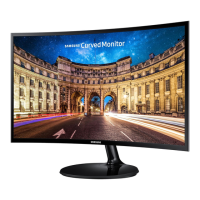

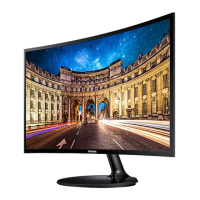
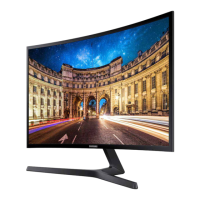
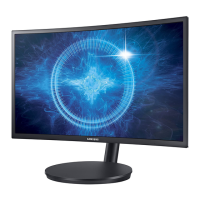

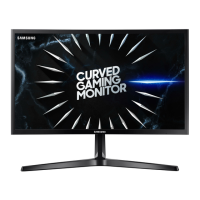
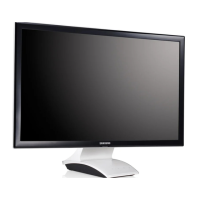
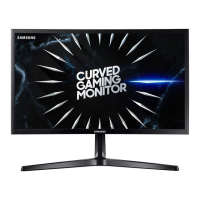

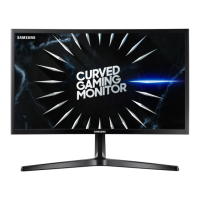
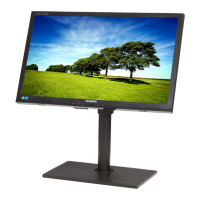
